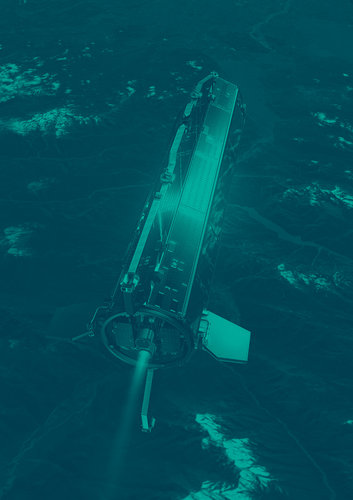GOCE helps tap into sustainable energy resources
Going far above and beyond its original mission objectives, results from the GOCE gravity satellite are now being used to produce maps for geothermal energy development.
Geothermal energy is heat from under Earth’s surface. From hot springs to magma, this energy provides a clean, sustainable resource that can be used to generate electricity, heat buildings, grow plants in greenhouses and many other applications.
These energy sites exist underground, but often in remote areas, making them difficult, expensive and time-consuming to explore and measure. While the potential of geothermal energy worldwide remains vast, more effort is needed to develop and harness it.
To help facilitate their exploitation, scientists from ESA and the International Renewable Energy Agency (IRENA) have used gravity measurements from the GOCE mission to produce an online tool that indicates areas likely to possess geothermal potential, narrowing the search for prospectors.

The tool’s maps show certain characteristics that may help in the search for geothermal reservoirs, including areas with thin crusts, subduction zones and young magmatic activity.
“These maps can help make a strong business case for geothermal development where none existed before,” said Henning Wuester, Director of IRENA’s Knowledge, Policy and Finance Centre.
“In doing so, the tool provides a shortcut for lengthy and costly explorations and unlocks the potential of geothermal energy as a reliable and clean contribution to the world’s energy mix.”
After a potential site location has been selected using the online tool, ground surveys and seismic measurements are still needed to determine the exact points for energy extraction, but the new resource is a step towards developing a comprehensive geothermal prospecting technique.
The maps outline two specific global gravity anomalies: ‘Bouguer’ and ‘free air’.

The free air gravity map provides information on geological structures, while the Bouguer gravity anomaly map combines GOCE data with information of global topography to show differences in crustal thickness. Together, the maps depict characteristics unique to geothermal reservoirs.
The two maps are complementary and form a basis to discriminate and classify different terrains at a country-wide scale.
GOCE’s mission ended in October 2013 when it ran out of fuel and subsequently reentered Earth’s atmosphere. But its wealth of data continues to be exploited to improve our understanding of ocean circulation, sea level, ice dynamics and Earth’s interior.
“This is the first time that global gravity data from GOCE have been used as a tool for geothermal energy site exploration,” said Volker Liebig, Director of ESA’s Earth Observation Programmes.
“ESA will continue its collaboration with IRENA to further improve space-based gravity data as a resource for sustainable energy development.”















 Germany
Germany
 Austria
Austria
 Belgium
Belgium
 Denmark
Denmark
 Spain
Spain
 Estonia
Estonia
 Finland
Finland
 France
France
 Greece
Greece
 Hungary
Hungary
 Ireland
Ireland
 Italy
Italy
 Luxembourg
Luxembourg
 Norway
Norway
 The Netherlands
The Netherlands
 Poland
Poland
 Portugal
Portugal
 Czechia
Czechia
 Romania
Romania
 United Kingdom
United Kingdom
 Slovenia
Slovenia
 Sweden
Sweden
 Switzerland
Switzerland




























